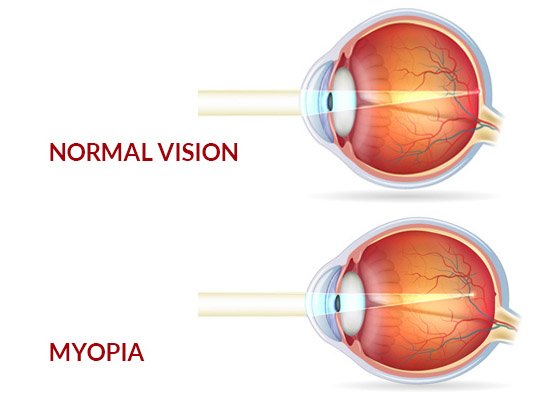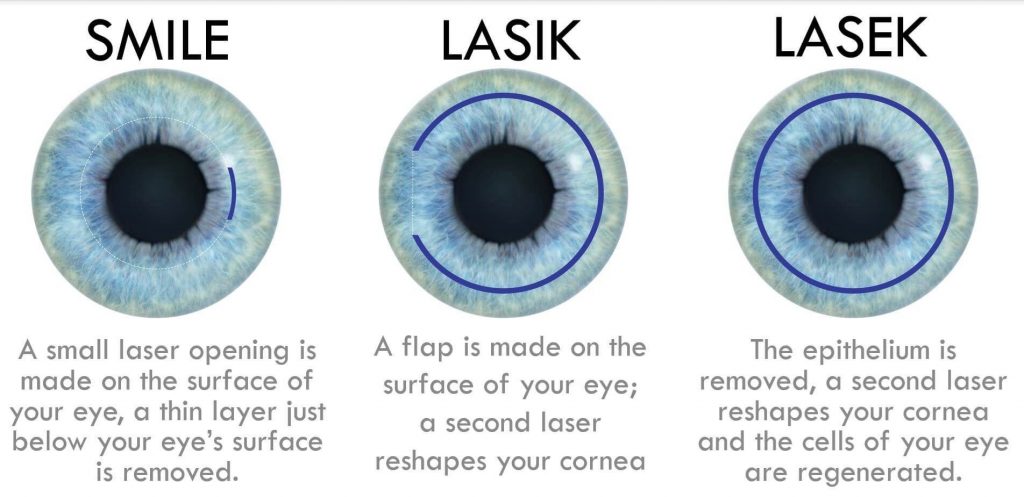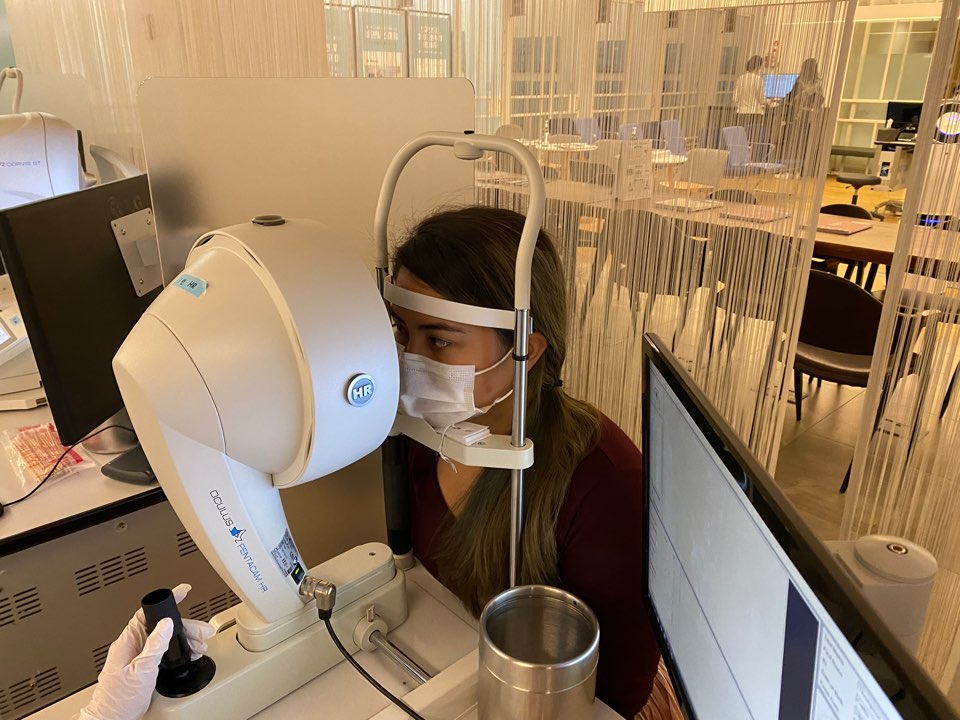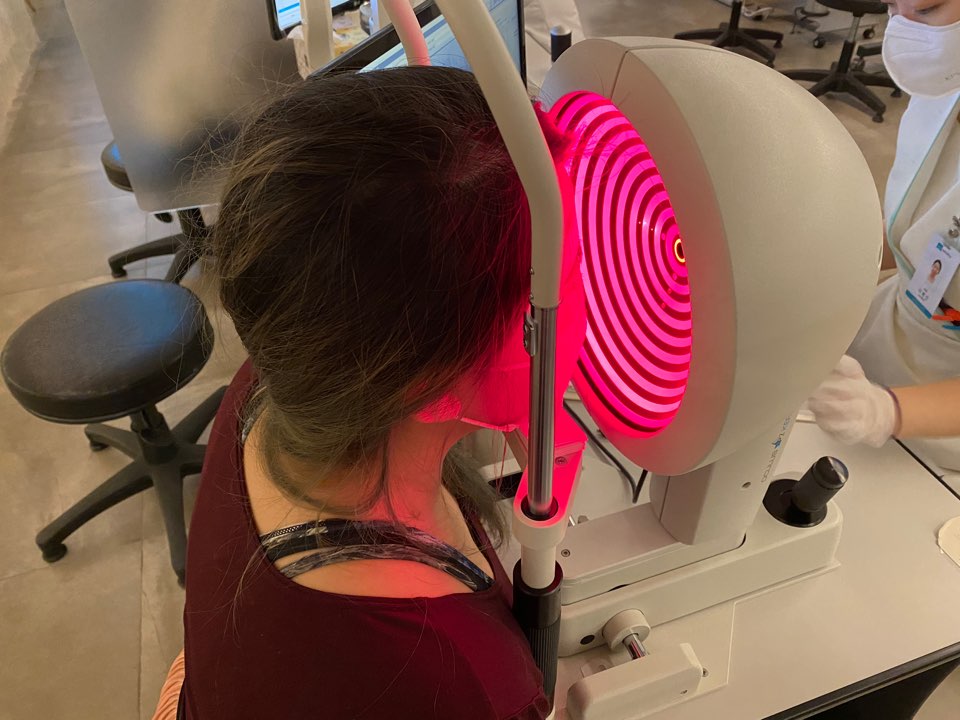SMILE Eye Vision Correction in Korea – Throwing away My Glasses
Myopia affects nearly 25% of the global population and affects people well into their adolescence. But thanks to modern medicine and technology, nearsightedness has become a thing of the past. Procedures like LASIK and LASEK have made life much more bearable for people who suffer from myopia. Now there is an even more advanced procedure, a procedure developed by Zeiss Eyeglass Company, which drastically decreases the discomfort of vision correction. It’s called SMILE or Small Incision Lenticule Extraction. Before we discuss how it works, what is myopia?
Contents
What Is Myopia?
Most of us have heard the term myopia or nearsightedness, but how many people actually know what it means. Myopia is a condition that causes vision to become blurry because of the eye’s inability to focus on an object that is far away. Nearsightedness is the opposite to farsightedness, which is a person’s inability to see things that are up close. For most people nearsightedness begins early on in life and can cause an array of problems such headaches due to squinting, straining of the eyes and of course difficulty seeing which makes everyday activities just that much more difficult.
Why Are my eyes nearsighted?
The reason for nearsightedness isn’t so much to do with health or age but more with our physiology. Not all eye balls are created equally. Some are round and the ones that cause myopia are long from the front to the back. With a normal shaped eye the light coming in through the cornea gets focused on to the back of the eye surface, the retina. The retina contains all the light sensing cells that help us see. The problem with the long eyeballs is that the light coming into the cornea gets focused too far forward, missing the light sensing cells of the retina. This is what causes objects that are far away to appear blurry.

How Does SMILE Work?
The way it works is rather different to other procedures. With LASEK and LASIK the epithelium (upper part of cornea) is either opened up completely and moved aside or opened up and folded over. SMILE on the other hands will only make a 4mm wide arc incision on the corneal surface. The lenticule that was the created with the laser before the 4mm incision will then be removed and discarded. The removal of this lenticule is what corrects the refractive error by reshaping the cornea.

What Are The Pros and Cons of SMILE?
While there are many benefits to getting SMILE such as quicker recovery, less discomfort, less post-procedure care and also a faster turnaround time to get back to normal daily activities, there are also some limitations. Firstly SMILE is only suited for people older than 22 years of age. So it is not a procedure suited for children. Also as mentioned above, SMILE is a procedure that assists with myopia (nearsightedness) and not all other forms of vision problems. Next, the price for newer and better technology can be more expensive than other procedures and the same holds true for SMILE. But in the last year or so prices have reduced a significantly and SMILE is now only slightly more expensive than LASEK and LASIK.
Is SMILE Right For Me
If you are nearsighted and older than 22 then you just might be the right candidate for SMILE. The only way to find out is to consult with a doctor who specializes in SMILE procedures.
My Story SMILE Eye Vision Correction Story
The idea of traveling for a procedure that could change the way I see the world, like SMILE vision correction, never crossed my mind. Never had I dreamed that I would be living in a foreign country looking at cosmetic procedures beyond vision corrective surgery and all within a doable price range.
I can’t remember being able to see without the aid of glasses or contacts. My entire family wears corrective lenses. On top of that, I grew up in the lower middle class on welfare. I’m from a small city in Tennessee. We never took family vacations especially out of the country.
Shin Medical
This is where Shin Medical comes in. I was researching both LASIK and liposuction (another blog on that topic later) when I found out an old colleague of mine was living and working in Seoul. We met up for dinner; I mentioned that I was looking into these procedures, and that’s how I found out he and a partner had started Shin Medical. They had undergone some procedures and thought about the frustrations of those who can’t speak Korean. BOOM! Shin Medical was born.
Having their help allowed me to take the plunge and have the SMILE vision correction surgery performed. I no longer had to research what clinics spoke English and then, which ones REALLY spoke English. Heads up if you’re looking into medical tourism: Many clinics that list English speaking are not fluent and it is frustrating to try and convey what you want to be done.
I had already looked into a couple of clinics when I was already over the language barrier and not in the mood to risk something so serious. I am a woman about convenience, so I was happy to let them do the heavy lifting for me. Shin Medical introduced me to B&VIIT Eye Center and the rest is history.
My experience is more convenient since I’m currently in Seoul. So after a few email exchanges with a wonderful woman named Rosa, I had my appointment set for my eye tests and (hopeful) surgery.
Procedure day
On the day of the surgery, I arrived at the building, headed to the appropriate floor, signed in at the desk, and sent an email to let Rosa know I had arrived. They allowed me to put my belongings in a secure locker and Rosa met me to translate and walk me through all the tests.
First, we started with a DNA test that would arrive later that day. There is a small chance that you may carry a gene that would cause eye correction surgery to fail. It’s rare, but if you have the gene they won’t perform the surgery.
Then, we went through a series of around 60 tests ranging from eyesight to refractive power to corneal thickness (super important) to tear-up time. Each test is designed to get to know your eye and determine if you can have a procedure and which options are available to you. I never know I could learn so much about my eyes!

After all the tests were complete, they walked me to a private consultation room and explained to me what my options were. They also gave me a pamphlet with all my eye information. Luckily for me, my eyes were prime candidates for any procedure available. Since I enjoy wearing artistic eye makeup and play sports, I went with SMILE. It was the most expensive option, but it has the lowest pain rating and recovery time.

Now, some of you might be wondering what is SMILE? I didn’t know either. It’s short for Small Incision Lenticule Extraction. Basically, it’s a mixture of LASEK and LASIK. Here’s a quick overview of all three in case you’re looking at having a procedure done too.
Types of Vision Correction
LASEK
LASEK (Laser-Assisted Sub-Epithelial Keratectomy) uses only one laser and is said to be great against external impacts if you like to practice martial arts or sports. During the process, an alcohol solution is put on your eye. This solution loosens a thin layer of cells on your eye’s surface called the epithelium. Your surgeon uses the laser to remove this and reshape your cornea.
After the procedure, a special protective lens will be put on your eye while it heals. This lens is usually removed around day 4. LASEK is said to be great for those that play sports, have very thin corneas, very small eyes, or severe dry eye. It does take longer to heal than other procedures with an initial heal time around 3-4 days and 3-6 months of post-op care (that’s just eye drops).
Full disclosure, Rosa said she had this procedure around 10 years ago and that the healing process was a bit painful. Technology and techniques have changed, so I expect it’s more comfortable and less painful now.
LASIK
LASIK (Laser-Assisted In-Situ Keratomileusis) uses two lasers: the first laser will create a very thin protective flap on the clear layer of your eye (your cornea). This protective flap will then be lifted, and the second laser will then be used to correct your vision. The flap is placed back in its original position.
LASIK has little downtime and pain. You’ll likely be able to resume your routine the following day. You will need to avoid impacts, so no sports. It’s a great option if you can’t take time from work, are sensitive to pain, need to correct astigmatism, and have a thick enough cornea.
SMILE
SMILE is pretty much a mixture of the two above. A TINY incision is made with a laser. The laser creates a thin lenticule inside the cornea. Then, the surgeon removes the lenticule through the tiny incision to change the shape of the cornea.
The procedure is great if you want the fastest recovery, play sports, suffer from severe dry eyes, or need to correct myopia or astigmatism.
Okay, so I chose my procedure and we set the surgery time for later the same day. They asked me to arrive about an hour prior to get check-in and set up. I arrive on time and check in.
Procedure prep
Rosa, who has been with me throughout the entire day, sits me down and explains the recovery eye drop regime. She explains the regime while showing me each drop. A few we go ahead and start putting in my eyes. She then explains that a few are for 2 weeks post-op and on.
She then hands me off to a nurse as I take my glasses off for the last time! The nurse takes my hand and leads me to the surgical area. We remove our shoes and step into a sealed room that then blows what I can only assume is something to make us sterile. Another door opens on the other side and I’m sat down so another nurse can take my blood. During the recovery, there is a set of eye drops that are made from your own blood!
Next, the nurse takes my hand again and leads me to a waiting room with giant comfy chairs. They ask me to lean my head back and close my eyes to prep them for surgery. I remain here for a moment while another nurse explains to me that there will be no pain and tries to calm my nerves. Next, I am led to the surgery room where I’m laid down in a machine. The surgeon arrives and walks me through the procedure once more.
It begins!
The actual surgery
I’m told to look at the flashing green X and just focus on it for as long as possible. One eye finished. Onto the next, I stare at the green X. Next, they move back to the other eye. I can feel pressure, but no pain as a blur moves across my eyeball. It was an experience. Not a painful one, but one that is awkward to try and describe.
If I were to try, I would say it looked and felt as if someone was tending to a tiny garden in my eye. Gentle and without pain. It was over in less than 10 minutes!
So, now, I’m going to leave. I look around and thank everyone for their help. My eyes are foggy, but I can read things across the room. I took the subway home. On the subway, my eyes felt a little discomfort, but that subsided after I arrived home and put in some of the eyedrops. Nothing eventful until the next day, I woke up and could SEE!
I mean, really SEE! I had no pain, no fog. When I went for my 24 hours post-op, we aimed for 20/20 vision, but they had exceeded goals and within 24 hours, I had 15/20 vision!
It’s been three weeks since my procedure at the time of writing this. By publication, it will be a month. I am still telling myself I don’t need to remove my contacts when I go to bed, but it’s been an amazing experience.
If you have any questions, please let us know or if you would like an in-depth blog on the types of eye corrective surgeries available.







